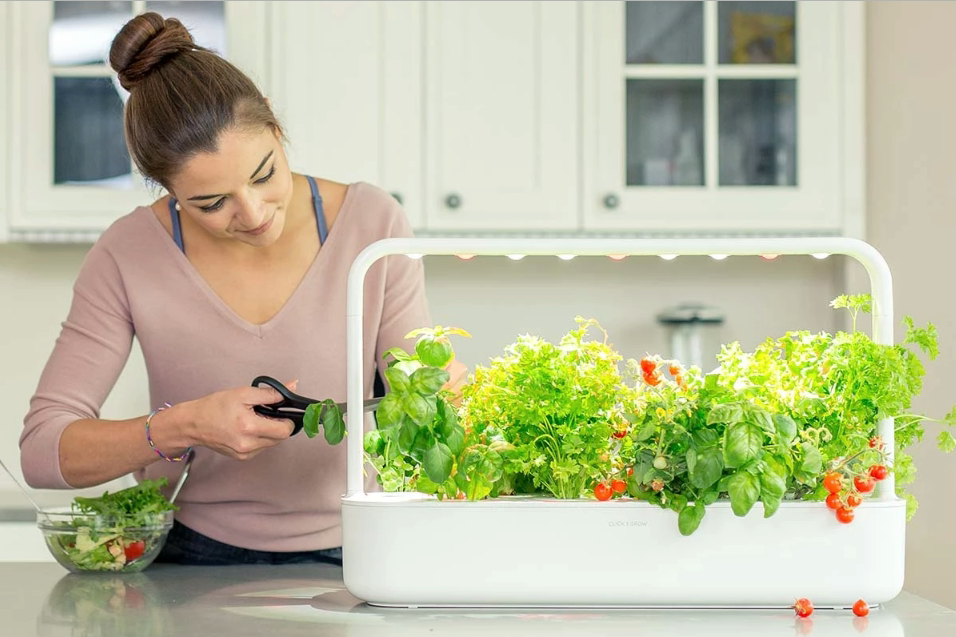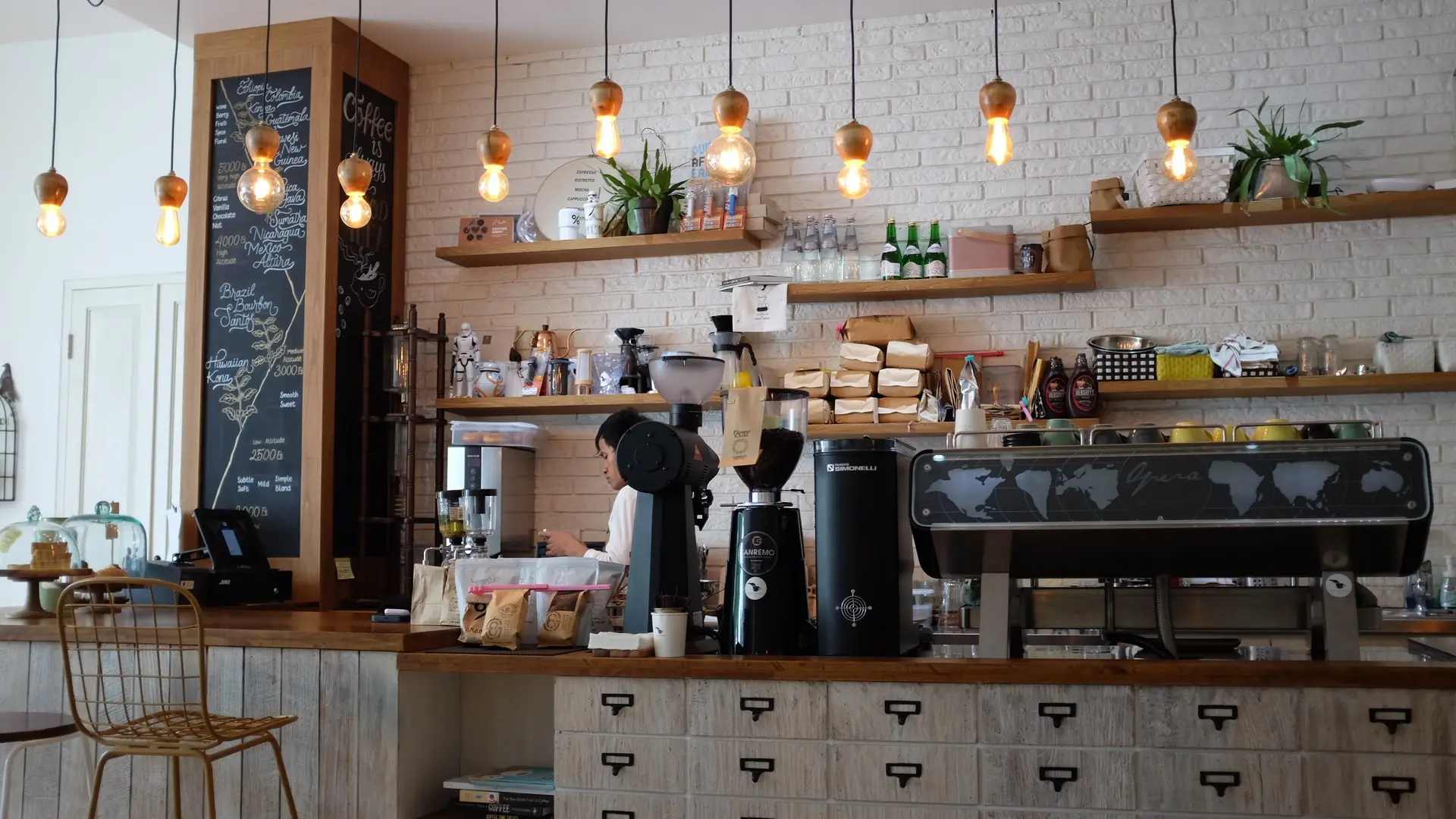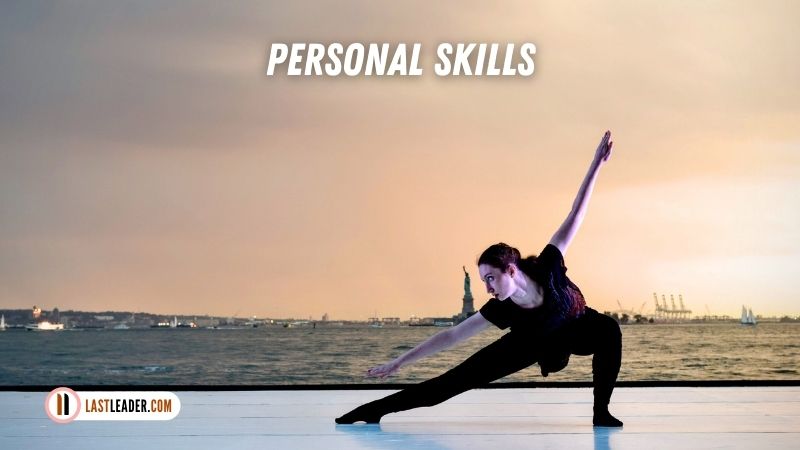Indoor gardening or container gardening can be a lot of fun and add a lot to your home or office. There are a few different tips and things to think about when you decide to start a project like this.
Adding plants and flowers to your home or office can be a wonderful way to add beauty and also relax and unwind while doing it. Choosing the correct plants to go along with your decor and taste does not have to be difficult, but it is just as important as choosing what furniture you have in your home or office. Plants are also good for our health and the environment, utilizing carbon dioxide and creating more oxygen.
Some different plants and tips to consider are:
Lighting and making sure there is enough of it. Indoor plants need more lighting then outdoor plants, due to less natural lighting. Making sure they get as much natural lighting as possible along with using sun lamps will ensure your plants grow strong and healthy. Getting enough light to your plants based on the type of plants is important too, so read the instructions and pay attention to the varieties you own.
There are some different varieties of plants and flowers that are good for indoor gardening and they are as follows:
- Philodendrons
- Boston ferns
- African violets
- Cyclamens
- Creeping fig
Never forget to water your plants. Obviously, they need to be watered, but indoor plants do not need to be watered as often as outdoor plants. Many times indoor plants are over watered and this can lead to rotting roots. Each plant will have different watering needs, choose the plant that will fit your lifestyle the best. You also do not want to underwater them because they are indoors either. They still need water to absorb nutrients, keep this in mind when picking which plants and flowers to have.
Picking a spot to put the plants that they will grow best is actually quite simple. Choosing a pot that will fit your plants giving them plenty of room to grow and thrive. Also, keep in mind the style of the plant and the place you are putting it in. Picking a pot that matches well will enhance the entire look.
Adjusting the humidity in the home may be necessary since many plants need the humidity to survive and each plant’s needs will be different. Using a humidifier is one way of increasing the humidity and creating an environment that is conducive for your plants.
Picking a high-quality fertilizer and soil that will allow your plant the best possible nutrients and growth, especially because they are indoor plants and will need many nutrients that they would typically get naturally outside.
Creating an indoor garden is a relaxing and fulfilling hobby that will bring coziness and friendliness to any home or office. It is not hard and is well worth the time and effort to pick plants that will work best for you, your home, your office, and your lifestyle.
How to do Container Gardening? – Tips for Beginners
There is nothing as attractive as having a splash of color on the window sill, on the balcony or in front of the front door. Container gardening is a wonderful yet simple way to create a garden that can add color and glamour to any environment. This article gives you some tips to get started.
Container gardening is a very simple and easy process by which you can create a small yet attractive garden. Since the space required is very small, you could create a colorful splash at any convenient place, be it along roof edges, balconies, or a patio. You could have your container garden in little pots of annuals or have long boxes perched on the window sill covered with beautiful shrub roses or multi-colored small perennials. You could arrange the pots in one big cluster to create a mass effect or even decide to focus on a smaller area with one specimen of a colorful flower. In any case, it lends the effect of a natural sanctuary to any environment.
There are numerous options on how you want your container garden to look. You could opt for a variety of flowers one after the other and as one plant completes flowering, you could plant another. You may decide to go for one color or have a contrasting effect. The few points you have to remember are: make sure there is a variety in heights of the plants, give some thought to the shape and texture of the leaves. Leaves that are tall give a good effect when you view it vertically rather than those which grow at pot level and are wide and flat in shape. Either you could choose plants that flower throughout the season or have plants ready to be planted, as soon as one plant completes flowering.
You could be creative in the types of pot you use. An old porcelain bowl or an old copper urn looks wonderful though you could be more modern and use timber or tiles for the pot. There are a number of wonderful terracotta pots which you could buy for using them as containers but remember, this material soaks up a lot of water. if you do not wish your plants to get dried up, coat the interior of the container with a special sealer that is easily available at hardware stores.
Plastic containers also can be bought which are cheaper and you could color the exterior with some water-based paint for adding color and making it look more attractive. Along with pots, also buy matching saucers to hold the drips. The saucers prevent cement floors from getting stained or wooden floors from getting rotten. A good quality potting mix must be used in the container, to ensure maximum results from the plants, after they are potted.
In case there are a few steps to enter your home, put one pot on each step. This will be a very welcoming sight for any visitor. Inside, the pots add to the coziness and warmth of the home.
Before you start potting the plants, you must first decide where you are going to place the pots and then buy the plants accordingly. This will ensure that you do not put plants that need sunshine in a shady corner. Some plants which have long and large roots should be kept in the open garden rather than in pots.
If the frontal area outside your front main door is very large, consider putting a group of potted plants on one side rather than putting two similar plants on either side, which makes it rather boring visually.
When positioning the containers, vary them in terms of height and shape. Also, group odd numbers of pots rather than even. To keep the pots together, arrange large rocks that look alike though may be of varying size. Three to five containers of similar shape and color but in varying sizes look rather attractive.
For a beautiful container gardening, all that you require are a bit of imagination, creativity and some will power to get it going. Soon your container garden can become the object of envy of your friends and neighbors.
Removing Your Container Garden for Winter
At some point, you will have to remove your container garden. They only can go for so long and there will be the cleanup and removal that will need to happen. Here are a few ways to make it a simpler project.
Now that summer is over, many of the flowers you have will no longer make it into the winter. However, there are a few ways to save some of your plants and get them through the winter. The other ones though will not be as lucky and have to be emptied and removed. Doing this is not difficult and can be done relatively easily.
If you planted any tropical annuals, they can be brought indoors for the winter. They will need:
- A very sunny window or ledge.
- A good amount of available moisture.
- Of course enough space to set them up.
Along with any tropical plants you have, you can also bring in palms and ferns. Removing some cuttings and essentially cloning your plants may be a better idea if you do not have a lot of room or an area that they can still strive in. The plants need to be very healthy with no bugs or blights.
What you will need to do to succeed is:
- Make sure you use a sharp knife and remove some of the non-flowering stems. It should be about three to four inches long.
- You will then need to make sure all the leaves are removed from the lower part of the stems; around two-thirds of the way down.
- Now that you have prepared the cuttings that you have chosen, dip the edges in the rooting hormone. Rooting hormone is available at all plant stores.
- Once they have been dipped, put the cuttings that are still damp, into moist sand or peat moss. Even tap water will work if you do not have sand or peat moss to use.
- Next, take the container that they are in and place it in a sunny place for three to four weeks.
- Do not forget to keep the sand or peat moss moist during this time.
- Keep checking your cuttings until you see that the roots are about 1 inch long.
- Now you are able to plant them in a regular pot and grow them on a sunny window ledge or room.
- This method works well when you are dealing with such plants as geraniums, pelargonium, coleus, and certain ivies. Sometimes impatiens work too.
So, you have rescued and saved all the plants that you can and you are ready to move onto cleaning the containers of the other plants and disposing of them. All the plants that you are getting rid of you can cut up and put into a compost heap, this includes the soil. You definitely want to get rid of all the soil especially if you have soil in terracotta or ceramic pots and containers. Any moisture in the soil will expand when it freezes and it will crack the pots and containers, ruining them and making a mess.
Now, simply wash out all the containers and pots to make sure all debris and fungus are gone. If there is a white ring on your terracotta pots then just soak them for twenty-four hours in white vinegar, water, and baking soda. After they have soaked use a stiff brush and scrub them in soapy water and rinse.
Next, dry the containers and pots in the sun and then stack them with paper towels or newspapers between them to absorb any moisture that is left. Try to store them somewhere at room temperature so that they do not freeze together during the winter months. However, as long as there are layers between them, they should be fine until the spring.
As long as you follow these tips you should have no problem saving some of your plants and being prepared for the following summer.
Simply Plant Yourself a Container Garden
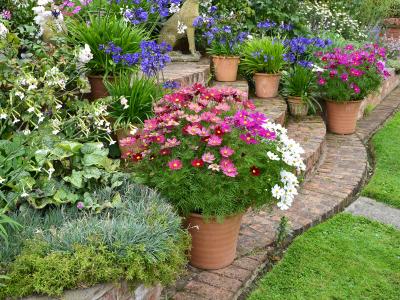
You have decided that you want to plant a container garden, but you are unsure of where to start or how hard it will be. Well, here a few tips and tricks to make it make things easier.
Container gardening may sound harder than it is, but really it is very simple and relaxing. Any space you have can be used to create a garden for yourself. That is why container gardening works so well, it does not take a lot of space and people with very little can still create beautiful flowers and arrangements, while using very little room. The name explains what you are doing; you will be using pots or buckets to grow fruits, vegetables, and flowers.
A major benefit to containers gardening is that it uses very little space and less soil and water. It works very well when you are living in an apartment or condo and do not have a yard to grow plants in. There is also less growing time with container gardening and you do not have to know as much about gardening to do it since it takes less time too.
There are a few basic ideas you need to know to begin your container gardening:
Once you learn these then creating beautiful arrangements with color and the texture will become much easier and you can turn a plain balcony into an eye-catching space.
- Decide which types of plants you want to grow. Picking plants that are best suited for container gardening will make maintaining your garden a little easier. Also, the experiment will color and size. But, always choose what you like best and what will grow best in the area you have chosen for them.
- Now you know what size containers you will need. There are many containers and pots available to choose from. Picking the right size will depend on the type and size of plants you plan on growing. Also, picking containers that will bring out the color in the plants and add to the entire design of the space you have chosen. However, since you have already picked the plants you want to use, choosing which pots and containers will be very easy. Except for maybe all the choices you will have.
- Lastly, get the soil that your plants grow best in. Picking a high-grade composite soil will work best since you are container gardening and there will be very little natural soil you will be using. Make sure you read the plant instructions too, there will be recommendations for which type of soil to use, how much, and any other nutrients your plant will need. So, read through these instructions as well and pick the soils that are suggested.
- You’re done! You can begin planting following the simple steps that will come with each plant you have chosen and the directions on the soil bags. Now it is just a matter of watering and maintaining the plants you are growing.
Having a container garden can be a full filling and fun experience, especially when living in an apartment or condo where you have limited space. The plants you have chosen can add color and dimension to any space. Or even living in a home with a smaller front or backyard can add beauty and texture to your home. Once you get good at it, it will be a simple and fun project to do regularly.
What You Need To Begin Your Container Garden?
There are only a few items you will need to begin your container garden. Here is some more information on container gardening and the supplies recommended:
Simply put container gardening is growing plants in containers instead of in the ground. It became very popular in the 1950′s in California when people living in apartments and other shared spaces begin growing plants in pots and containers to put on their balconies and entryways. Container gardening only needs a few things, which are:
The containers themselves. You may have already decided which type of plants you want to begin growing. Picking a container that can hold the size of the plant you want is important. However, choosing a container that works well with the colors of the plants and also with the place you are planning on putting the container too. You may need to move your plants from one container to a larger one as they grow. So, keep that in mind and maybe buy different sizes so whenever necessary you can transfer the plants to the larger pots.
One other thing, there are pros and cons to any type of container you use, so depending on where you live and again the plants you have chosen will make a difference in the type of containers needed. They all need plenty of holes in the bottom for drainage.
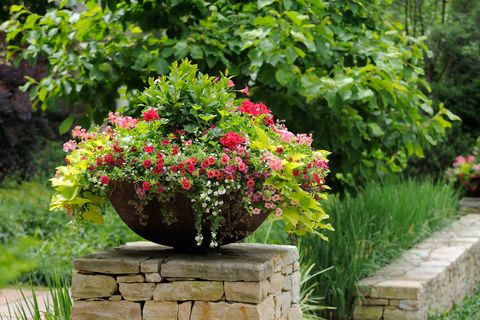
Here are a few examples of the different types of pots:
- Plastic will break down and dry out when out in the sun a lot. However, it is easier to move since it is lighter.
- Wood does rot and grows fungus. But, Redwood and Cedar are a bit more sturdy and it does not happen with them as quickly.
- Terracotta dries out very quickly and will develop rings on them from calcium deposits.
- Ceramic pots are a good choice, however, they are slightly heavier.
- Soil and nutrients. The best to use for indoor gardening is a soil-less potting mix. It will drain better and there will be no diseases or weeds. When you fill the container, leave about two inches between the top and mix, that way you have room for the mulch on top.
- Water and food. You will need to water the plant-based on size and type. Those instructions will actually come with each plant and they will need to be followed. This holds true for the amount of sunlight they will need and shade and the time of year they grow best in. When you do water make sure all the soil is moist and when there is water coming from the bottom you know you have given the plant enough usually. Also, because the soil is very light your plants will more fertilizer. A slow-release or water-soluble type works best.
- The right temperature and space. When you plant vegetables, flowers, or herbs you will put them one third closer than you would if they were in a garden. With trees and shrubs, they should be centered in the pot or container. Any plant will need to be re-potted whenever necessary. Since you are container gardening, you will be able to protect them from extreme heat and cold. Move the plant whenever necessary to keep the temperature right.
- Pruning and preening. Making sure you trim your potted plants regularly and remove any dead or brown parts is important also. There will be less mess and your plant will do much better since there will be no bugs or fungus growing.
Creating a container garden will add color and life to any area. This is a hobby anyone can get into and as you can see it is not difficult to start.
Beginners Guide To Successful Container Gardening
If you are new to container gardening, you are probably excited and wondering what you need to do or how to start. Here is everything you will need to know to get your container garden started.
Having limited space does not mean that you cannot have a garden. Instead of thinking that only gardens grow in yards and around trees, think about how they can be grown in containers instead. Container gardens can be created anywhere and will add beauty and interest to any busy street or on a balcony or even rooftops. What is nice also is that you can change the look often and whenever you feel like since all of your plants are in containers and easily moved about to give different and interesting looks.
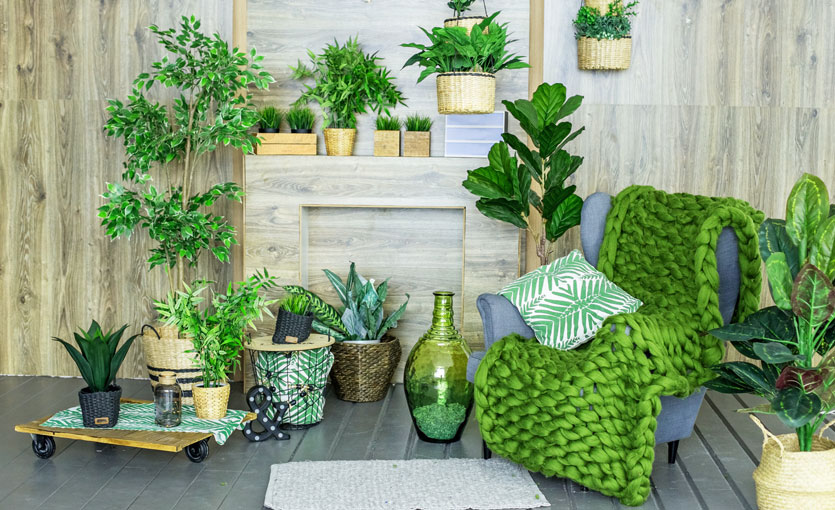
You will find changing your color scheme and the look often interesting and fun as you come up with new ways to arrange your plants and pots. Contrasting colors and adding flowers and plants of varying sizes and shapes will give depth and novelty to any look you come up with. If there is something you do not as it can easily be changed on a whim into another interesting creation. Or as flowers bloom, change them out to a different variety to keep your ever-changing container garden interesting and different.
Keep these ideas in mind when you begin to create your container garden
- Try all different types of containers. Use household items even, such as coffee cans that have been cleaned, buckets, even broken pots. Just make sure to make holes in the bottom for water drainage. Anything you can think of that can hold items, conceivably be used.
- Remember that terracotta absorbs water, but comes in many different shapes, sizes, and colors. While wood will wear out over time and be heavier. Plastic is great too because of the variety offered in the material, however, over time it will become brittle and dried out from the sun.
- Paint the interior of any pot you choose to ensure that the plants do not dry out and that they can absorb the most water.
- Always use a saucer under all your pots to catch the water and save your cement or tile or wood from water rings and calcium deposits.
- Choose high quality and grade potting soils. Since you are the container gardening, your plants will definitely need the best soil possible to thrive and grow.
- Do not let any area be off-limits. If there is space you can place a container there with plants and flowers, whether indoors or out. Try many different locations to achieve the look you want.
- Plan ahead and know where you want to put your plants so you can make sure you buy the right type of plants for the location you choose. All plants will have tags with instructions on where they work best and how to take care of them. Follow these instructions when picking your plants and the locations they will be placed in.
Regardless of where you live or if you have a green thumb or not, container gardening is an easy and fun way to add color and coziness to any living space. However, container gardening is not for where we live but can create a welcoming feeling to any business or office. If you have been looking for a way to spruce up an area or make some minor changes, try container gardening, it may be exactly what you have been looking for.
Fresh Ideas on A Old Concept
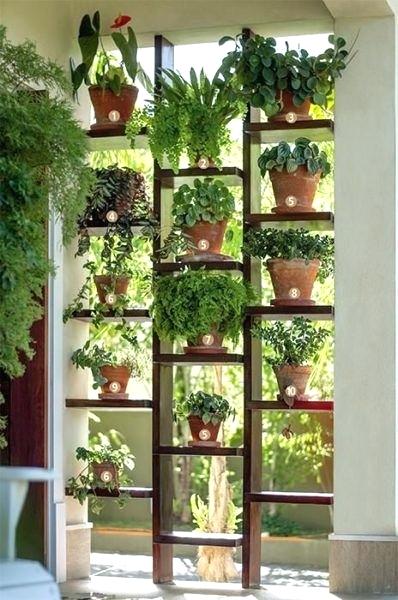
Container gardening has been around for a while and with very little space one can be created. Here are some ideas and ways to take part in this fun activity.
With so little space nowadays and costing more than ever, condos, apartments, sublets, and very small garden homes have become popular to save money and space. Many times living in these confined spaces we feel like we have no room and definitely can not grow a garden or anything of beauty. However, that is not the case. Growing a garden indoors can bring beauty and relaxation, even to the smallest space.
Maintaining a small vegetable, fruit, flower, or plant garden is not difficult. It is simple and easy, the most work happens when containers need to be emptied and changed once plants have outgrown them.
Here are some of the great benefits of having a container garden:
- You can grow your plants year-round. No matter the season, as long as your plants are receiving sunlight and ample water, you can have an indoor garden even during the coldest of winters and hottest of summers.
- The containers and pots that you use become part of your decor and can create focal points and interesting areas in any home.
- You can use anything for a container to hold your plants, as long as they can drain water, they can be used.
- There are fewer weeds since your plants are in a much more controlled environment.
- Also, you will have fewer and less chance of snails, bugs, and disease attacking your plants.
- With even the smallest space a container a garden can be made.
There are a few things you will need to start your container gardening:
Here are the basics that everyone should know when beginning their garden.
- Pick the space you want to use. Deciding on the space will ensure that you pick containers and plants that will fit and look their best in their new home. Know how much sun and shade your spot gets, this will help when you go to purchase your plants. If you are using window ledge plants or hanging box planters for windows, then know where they will be draining to if they are up high and make sure you will have enough space for them to drain onto. If in an apartment, be careful about drainage.
- Once you know where you want to put the plants, now you are able to choose the plants themselves. Picking plants that work best in the areas you have chosen based on sunlight and shade. Also, picking plants that will not become too big for space they will be in. Each plant will come with watering instructions and feeding needs, making picking the plants a lot easier.
- Finding containers to put your plants in can be anything that can drain water. Choosing containers based on your current decor and the size and type of plants you will be putting in them. Anything can be used for a container, from wood to tiles to ceramic, plastic, and terracotta. Always place trays under them to catch the water and make sure they have enough holes in the bottom to drain out the water, this will stop root rot from happening.
- Since you are growing indoors, you will want to get premium potting soil for your plants. Make sure you get the recommend fertilizers too, this will ensure that your plants thrive in their indoor living space.
- Lastly, make sure you follow the watering instructions carefully. Overwatering will cause root rot and under watering will cause your plants to dry out. Follow the instructions and make sure the plants you have together all need the same type of watering, sunlight, shade, and fertilizer needs. This will make taking care of them much easier and simpler.
Whether you are a pro at gardening and have had many outdoor gardens or a beginner, indoor gardening is a fun and relaxing past.
Indulge Your Green Thumb
There are many different plants that can be used for container gardening. Here are some tips and plant types that work the best.
Whether you live in an apartment or a house or even a condo, you can enjoy container gardening. As long as you have some space and time you can create beautiful flower displays throughout the year. The most difficult part of growing container flowers and plants is the work involved in filling and emptying the containers that are used. This part does take some time and effort and the containers do have to be changed occasionally as the plants and flowers become larger and outgrow the container they were originally in. However, other than that container garden is very simple and fun, once set up there is not a lot to do but maintain and enjoy your plants. Maintaining the plants is watering, fertilizing or feeding, and pruning them according to their instructions that come with all plants.
Again, there are some plants that work better than others depending on if you are planing them in the Spring or the Summer and the type of plant. Here are some that work best.
Ledge plants that work best in the Springtime:
- Arabis Albida (multiple varieties) and you can recognize them by their stems that have grey, hairy leaves and they bloom spikes of double, white flowers.
- Aubrietia is a bit smaller, and they bloom blue, pink, and purple flowers. These are good to carpet your flower boxes or fill in spots around other flowers.
- Bellis Perennis Flore Pleno or also known as Double Dwarf Daisies. These are small and work great in window boxes, they come in red, pink, and white flowers.
- Myosotis or there more common name if Forget-Me-Nots. They usually come in shades of blue and can make a nice carpet box. These can also be used by themselves too.
- Primula (Polyanthus) are great in the shade, they do not do as well in direct sunlight. They come in many different colors.
Some different varieties of plants and flowers are some different varieties of plants and flowers are
Ledge plants for during the Summer:
- Ageratum Houstonianum or Mexicanum. They have tight stems that have small blue, fluffy flowers and they come in many shades of blue.
- Lobularia Maritima or Alyssutn Maritimum. Another name you might have heard them by is white or sweet alyssum. You can use these for edging in your flower beds.
- They only grow about 2-4 inches in height and they have a sweet scent. Lilac Queen and Violet Queen are two they were just added.
- Begonia Semperflorens grow to be about 6 inches tall and bloom tons of flowers in shades of red and pink.
Whichever plants you choose for your Spring and Summer gardens, deciding between which ones to use will probably be more difficult. Using a combination of these will actually create a beautiful display. Of course, there are these and many more to choose from. Picking interesting and unique containers and making ever-changing displays will keep your flowers interesting and fun. Also, remember to experiment with your arrangements and choices, try different combinations to see what works or looks best.
Hi friends, I hope you liked these ideas about indoor gardening. Comment below if you found this container gardening guide helpful. Share with friends. Sharing is caring.
